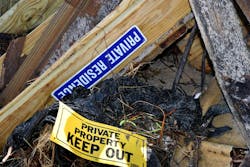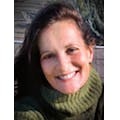Next Steps for Disaster Resilience and Rebuilding
In “Recovering From the Wreckage,” senior editor John Caulfield examines the recovery efforts of builders in the aftermath of the fires, floods, and storms that have hit northern California, Houston, and Louisiana. As you’ll read, much of the work is being shouldered by local builders that are embracing new ways of doing business in order to help their areas recover. Big builders are involved, too. In Houston, a consortium of four—David Weekley Homes, Trendmaker Homes (a subsidiary of Tri Pointe Group), Taylor Morrison, and Partners in Building—has started BuildAid, a nonprofit through which project management and purchasing services are contributed.
Natural disasters continue to increase in frequency and intensity, but in the story, Caulfield says not to expect those that are rebuilding right now to be pioneers in resilience. While climate change is acknowledged by builders as a real and true threat, cost and time pressures are the obstacles cited by those that do not build beyond what’s mandated by local codes and federal guidelines.
But there are innovators at work on viable solutions. After the devastation of Hurricane Katrina in 2005, designer and professor Marianne Cusato came up with the Katrina Cottages, modest homes that presented flood survivors with alternatives to HUD trailers. More than 3,000 families ended up being helped by the project.
Now, Cusato and builder Craig Savage have teamed up with the developer of the Katrina Cottages to form Cypress Cottage Partners, which works with nonprofits to provide turnkey disaster housing that’s temporary-to-permanent. “It’s the whole package,” Cusato says, noting that permitting, construction, financing, additional sponsorship, and promotion are included.
Cypress Cottage Partners “picks up where the Katrina Cottages left off,” Cusato says. Homes vary from 400 to 1,200 square feet, depending on project need. Cusato’s homes are hurricane-, water-, fire-, and earthquake-resistant. Designed to get built fast, they’re movable if the owner decides to relocate, as well as net-zero energy ready and equipped to accommodate photovoltaic panels.
Currently, Cypress Cottage Partners is working in the Florida Keys and in Santa Rosa, Calif., sourcing materials as locally as possible. Cusato’s designs will be included, as will those by other manufacturers. (“We don’t need to reinvent the wheel,” she says.) The eventual goal is disaster-relief homes light enough to be assembled by two mid-level skilled trades. “That’s the dream,” Cusato says. “A kit house you can snap together.”

